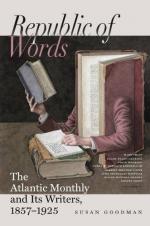From Goascoran to Aramacina, a distance of twelve miles, the road traverses a slightly broken country, while the river pursues its course, as before, through a picturesque valley, narrowed in places by outlying mesas, but still regular, and throughout perfectly feasible for a railway. Aramacina itself is prettily situated, in a bend of one of the tributaries of the Goascoran, the Rio Aramacina, and numbers perhaps three hundred inhabitants. Immediately in front rises a broad sandstone table or mesa, at the foot of which there are some trickling springs of salt water, much frequented by cattle, and corresponding to the saltlicks of our Western States.
Behind the town is a high spur of the mountain range of Lepaterique, covered with pines, and veined with silver-bearing quartz. We visited the abandoned mines of Marqueliso and Potosi, but the shafts were filled with water, and only faint traces remained of the ancient establishments. Extravagant traditions are current of the wealth of these mines, and of the amounts of treasure which were taken from them in the days of the Viceroys. A few specimens of the refuse ore, which we picked up at the mouth of the principal shaft, proved, on analysis, to be exceedingly rich, and gave some color to the local traditions.
The cabildo of Aramacina was very much dilapidated, and promised us but poor protection against the rain, which now began to fall every night with the greatest regularity. We nevertheless selected the corner where the roof appeared soundest, and managed to pass the night without a serious wetting. The evening was enlivened by visits from all the leading inhabitants, whom we found to be far more communicative than their neighbors of Goascoran. Our most entertaining visitor, however, was a “countryman,” as he styled himself, a negro by the name of John Robinson, born in New York, and now a magnate in Aramacina, where he had resided for upwards of sixteen years. Although he had fallen into the habits of the native population, and wore neither shirt nor shoes, he entertained for them a superlative contempt, which he expressed in a strange jumble of bad English and worse Spanish. He had been with Perry on Lake Erie, and afterwards on board various vessels of war, in some capacity which he did not explain with great clearness, but which he evidently intended should be understood as but




